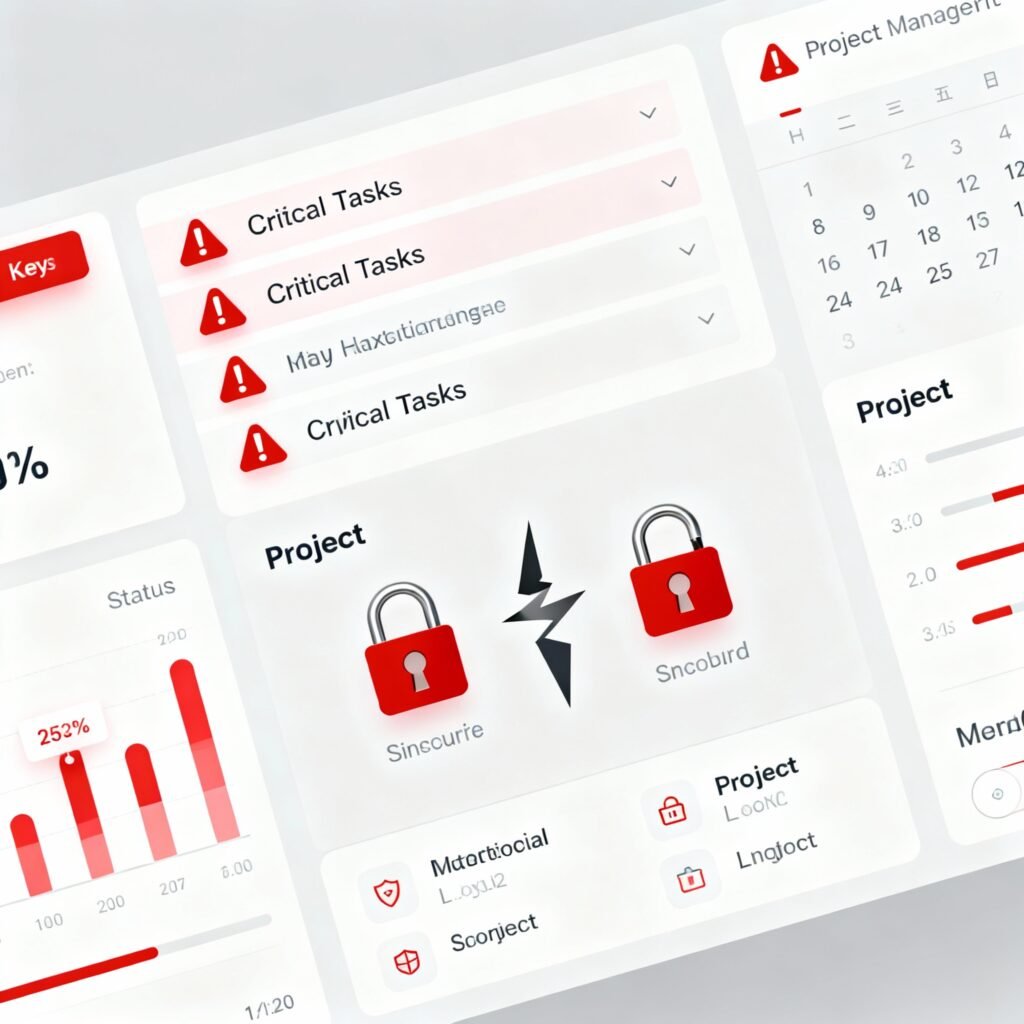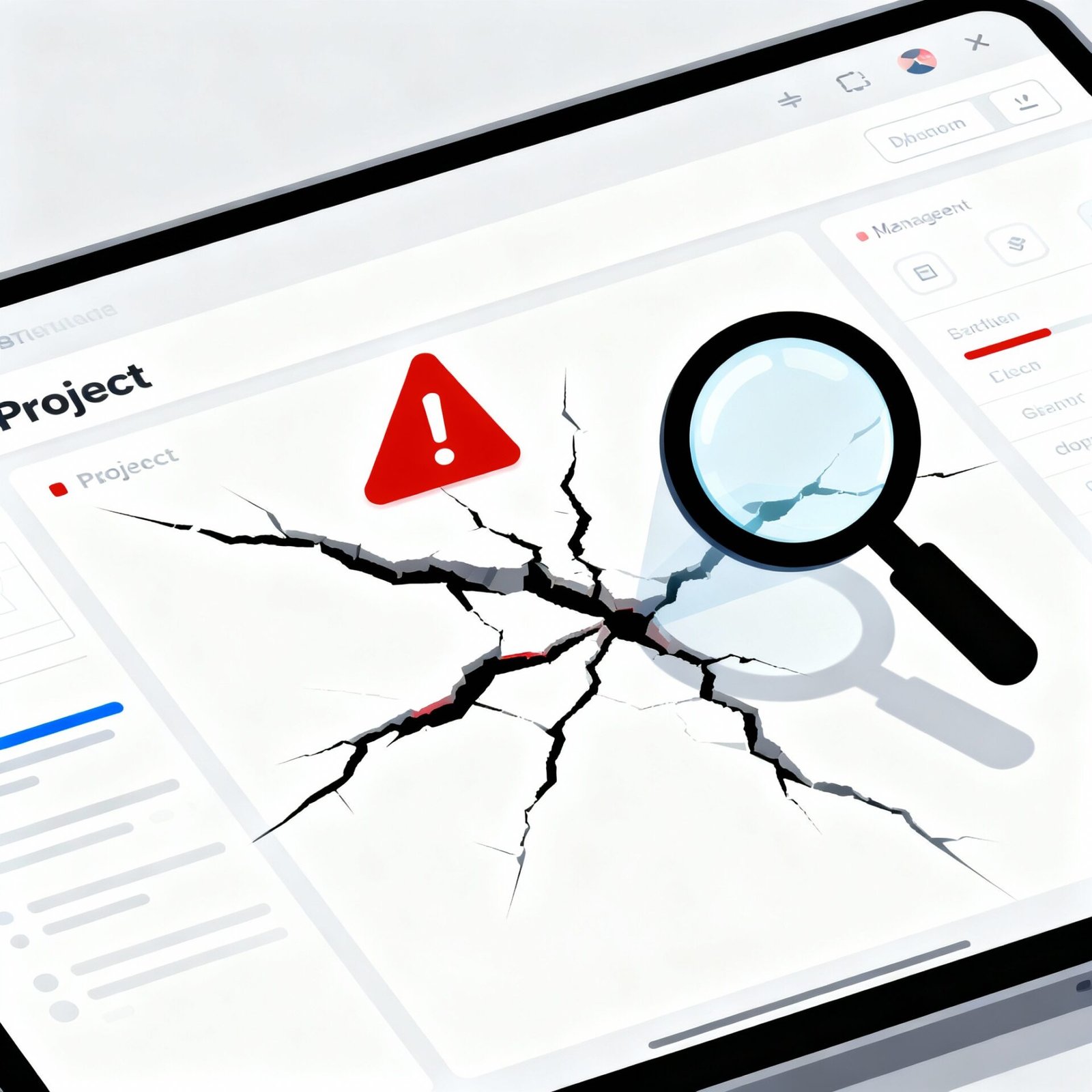Project management and collaboration software like Asana, Trello, Monday.com, ClickUp, Jira, Basecamp, and Notion have become indispensable for businesses worldwide. Major corporations and small teams alike rely on these cloud-based platforms to coordinate projects, share documents, and track tasks.
As of 2025, Atlassian’s Jira and Trello boast tens of millions of users globally, Asana counts over 130,000 paying customers (and millions of free users), and Monday.com reports 225,000 customers.
Yet this popularity comes at a cost: our investigation finds that many of these “market-leading” tools suffer from serious security and privacy weaknesses. From unpatched code and exposed APIs to lax encryption and exploitable features, these security flaws in project management tools and platforms have quietly accumulated vulnerabilities that put user data at risk. The breaches and incidents we document below make clear that the enterprise-grade security promised by these vendors often falls short in practice.

Real-World Breaches: When Project Workflows Spill Secrets
Project management data isn’t just to-do lists; it often contains proprietary plans, customer information, financial estimates, and other sensitive content.
Unfortunately, real incidents show this data has leaked. In January 2024, for example, a vulnerability in Trello’s public API allowed threat actors to scrape over 21 gigabytes of Trello user data. A hacker known as “Emo” claimed to have stolen this data in early 2024 and then dumped it on a Breach Forums site.
According to security blogs, the haul included “over 20 GB of Trello user data like usernames, email addresses, workspace memberships, and other profile details”. NordPass’s analysis found that “a staggering 21.1GB of Trello data has been leaked online, putting millions of users’ sensitive information at risk”. Although Atlassian (Trello’s parent) says the API issue was fixed, these leaked records persisted, underscoring how design flaws can expose user databases.
Even for other platforms without a headline breach, thin margins of error have been exploited. In June 2025, Asana revealed that a brand-new AI “MCP” server feature had an internal bug. This flaw “could have potentially exposed certain information from your Asana domain to other Asana MCP users”. In practice, this meant that when an organization’s project manager queried Asana’s AI chat, data on tasks, comments or files that should have been isolated could have leaked to the AI accounts of other organizations.
Asana insists “this was not a result of a hack or malicious activity on our systems”, but rather an internal coding error. Still, the impact was serious enough to force Asana to take the MCP service offline for two weeks, patch the code, and notify affected customers. This incident highlights that even trusted collaboration features can inadvertently broadcast private data if multi-tenant isolation fails.
Similarly, in January 2024 Monday.com (used by entities from Coca-Cola to the BBC) was collateral damage in the widespread Codecov supply-chain attack. In a public SEC filing, Monday.com disclosed that attackers “gained access to a read-only copy of [their] source code” during the Codecov incident.
While Monday says none of its products were altered and customer data was not accessed, the breach underscores a point: project management companies depend on third-party tools (like CI/CD systems) that can become attack vectors. Monday’s response included rotating all environment keys and scrubbing any malicious code, but companies realized that source code leaks, even without immediate damage could enable future attacks if discovered.
Basecamp, long a popular lightweight project tool, has fared somewhat better in its incident record, but it too has been targeted. In January 2019, for instance, Basecamp detected a credential-stuffing assault that attempted 30,000 logins against its 3 million accounts. Using known breached passwords harvested elsewhere, attackers successfully logged into about 124 accounts.
Basecamp’s CTO David Heinemeier Hansson reported that “All of the unauthorized access was gained using the correct username and password for the account. It’s highly likely that these credentials were obtained from one of the big breaches”. Although this was a traditional credential-attack (not a platform vulnerability), it revealed that customer accounts on even well-defended tools are vulnerable to the fallout of unrelated breaches. Basecamp’s swift shutdown (blocking IPs, resetting all compromised passwords) limited the damage, but the incident emphasizes that any SaaS service becomes a target if users reuse credentials.
Other emerging tools have also shown glitches. Security research teams have discovered high-severity flaws in ClickUp’s desktop apps that could allow code execution and data disclosure, requiring urgent patching. One ClickUp forum warned that, prior to recent updates, all attachments and forms in ClickUp were effectively public links (protected only by obscurity) unless “Private Attachment Links” were enabled. ClickUp has since rolled out a beta setting requiring users to log in to open attachments, but until then important files could have been inadvertently exposed.
Notion has similarly tight grips on user data or so it claims. While Notion encrypts data in transit and at rest by industry standards, experts note it lacks true end-to-end encryption. This means system administrators (or attackers who gain platform access) could view unencrypted content. Recently, security technologist Bruce Schneier publicly warned of a scenario where Notion’s new AI agents could be tricked into exfiltrating an entire company’s confidential client list through “prompt injection.”
Schneier explained that Notion’s agents have the “lethal trifecta” of (1) access to private data, (2) exposure to attacker-controlled input, and (3) ability to send queries externally. In plain terms: an attacker could embed hidden instructions (for example, in a PDF document) telling the AI to gather customer information and email it out. “We simply don’t know how to defend against these attacks,” Schneier warned. Although Notion hasn’t been hacked via this exact vector yet, the expert testimony illustrates how cutting-edge features can introduce dangerous new attack surfaces.

Encryption, Authentication, and Insider-Access Gaps
All the tools above tout encryption and safeguards, but implementations vary. Industry norms require TLS 1.2/1.3 for data in transit and AES-256 at rest. Most vendors comply: Monday.com’s trust center claims “all customer data in transit is encrypted using TLS 1.3 (AES-256)”, and Asana, Atlassian (for Trello/Jira), ClickUp, Basecamp, and Notion all advertise similar encryption practices.
However, experts caution that encryption alone isn’t enough when keys or plaintext data can be exposed by other means. For example, Notion’s lack of end-to-end crypto means platform administrators (or malicious insiders) could potentially decrypt user content.
Weak or optional authentication compounds this. Many free or entry-level accounts of these tools don’t force multi-factor authentication (MFA) or single-sign-on (SSO) integrations, leaving accounts accessible by password alone. In Basecamp’s 2019 incident, all breached accounts were protected only by breached password strings.
If companies neglect to enforce 2FA, an attacker armed with a leaked password database can bypass the system entirely. And once inside, former security teams have pointed out, SaaS platforms often allow privileged users (admins, support engineers) broad access to customer data. It’s not public knowledge how each PM vendor audits internal staff access, but the risk is real: if an insider at one of these companies abused privileges, customer projects could be fully exposed. (So far no such insider breach has been publicized in these products.)
Insider threats can also emerge via entrusted integrations. Many PM tools allow deep integrations with third-party services (GitHub, Jira, Azure, Slack, etc.). If an integrated app is compromised, it can become a pivot into your project data. The Monday.com share-update feature abuse in 2025, for instance, wasn’t a crack in the code but a user misusing a legitimate function.
A global bank alerted staff to avoid Monday.com emails after attackers spammed forged “share” links. Monday quickly disabled the feature, admitting only that a customer misused the tool. But it shows how features meant for convenience (sharing progress via email) can be repurposed for phishing. Even standard add-ons require scrutiny: in 2021, the Codecov compromise taught companies like Monday.com that any CI/CD plugin could leak environment variables to attackers.
Attackers’ Targeting Tactics For Security Flaws In Project Management Tools
Why do attackers target project management software specifically? Cybersecurity research firms point to one simple answer: these tools aggregate huge amounts of sensitive information in one place. A recent report by Push Security highlights a spate of breaches all centered on Atlassian’s Jira. From November 2024 to March 2025, a RaaS group dubbed “HellCat” claimed credit for at least six separate intrusions into organizations via stolen Jira credentials.
Victims included telecoms (Orange, Telefónica), manufacturers (Schneider Electric), auto-makers (Jaguar Land Rover) and more. The breaches were costly: attackers exfiltrated “hundreds of gigabytes of data and thousands of records” by simply logging into Jira accounts with credentials pilfered from past leaks. In each case, once the attackers accessed a single Jira account, they used Atlassian’s collaborative features or APIs to download source code, customer data, project plans, contracts and emails, then demanded ransom for deletion.
Security analysts note that these attacks are successful because SaaS project tools often contain a “goldmine” of information. Tickets and tasks can have architectural diagrams, research documents, even shared secrets. A compromised Jira login might give an attacker the keys to an entire development pipeline, including connected Confluence wikis, Bitbucket repos, and deployment scripts.
As one analyst put it, “Jira has become a prime target for attackers due to its centrality in enterprise workflows and the wealth of data it houses”. Alon Gal (Hudson Rock CTO) echoed this sentiment, warning that attackers know to hit project trackers early in a breach.
Other attack methods have targeted the ecosystem around these tools. For example, firms that rely on Notion’s AI agents or ClickUp’s public attachments have only recently recognized attack vectors in AI prompt injection and unsecured file links. The lesson: attackers view project management platforms not as isolated apps, but as gateways into corporate infrastructure. A leaked token or default public link can bypass network perimeters entirely.

Comparative Global Insights
This is not just a U.S. problem. Companies around the world use the same software and face similar risks. In Europe, where data protection laws are strict, these incidents trigger fierce regulatory scrutiny. For instance, an EU company using Trello could be held liable if their data was exposed via the Trello API leak, since GDPR requires controllers to ensure third-party processors secure personal data.
Indeed, regulators have already shown a willingness to fine organizations heavily for failing to prevent breaches; by 2025 EU data protection authorities had issued over €5.5 billion in GDPR fines for various security lapses. (While none of these fines are specific to project management tools yet, the precedent is clear.) Companies in Europe and Asia often localize data for compliance, and some governments may restrict cloud collaboration tools on national-security grounds.
For example, India’s upcoming Personal Data Protection Bill may force foreign SaaS vendors to store sensitive data on local servers, potentially affecting services like Asana or Jira that rely on global cloud infrastructure.
In Asia, the picture is mixed. Some countries, like Singapore and Japan, have strong cybersecurity frameworks and have publicly recommended best practices for SaaS (e.g. enforcing MFA and vetted integrations). Others are still catching up.
A cybersecurity head at a multinational in Hong Kong told us they now treat project management services like any other critical SaaS: “We conduct a vendor risk assessment and insist on SOC 2 compliance or ISO27001 certification,” she said. In Latin America, where cloud adoption is growing, we found concerns from IT managers about “shadow SaaS” i.e teams using Trello or Notion accounts with weak controls after hearing news of global breaches.
In fact, this cross-border concern was illustrated by recent panel discussions at global cybersecurity conferences. Legal experts have warned companies (and insurance carriers) that inadequate encryption or unchecked integrations could expose them to transnational data liability.
A CISA representative noted that any cloud data leak, no matter where the vendor is based, can trigger U.S. breach notification laws if U.S. citizens’ data is involved. Similarly, officials in the EU’s NIS2 directive consultations have flagged cloud work tools as a critical sector requiring better risk management. Although we did not find any reports of U.S. or European regulators investigating specifically Asana or Notion, industry insiders believe regulators will eventually expect stricter due diligence from companies using these tools.
Voices from Affected Users and Experts
The human impact of these security flaws is serious. In leaked forums and community posts, some companies confirm they scrambled after learning their Trello or Asana data was exposed. A European telecom engineer, speaking anonymously, lamented that “we thought Trello was just internal lists, but [upon hearing of the breach] we realized we had customer emails and project histories in there. We now have to audit everything.” Similarly, at least one small U.S. software startup told us it disabled a newly-adopted project planning tool after reading about the MCP bug in Asana. “We found an alternative with on-premises hosting instead,” said their CTO.
Cybersecurity professionals we interviewed emphasized that complacency is the enemy. “Organizations often see these tools as benign — just sticky notes on a screen,” said a security consultant specializing in SaaS. “But once you rely on them, all your data is suddenly exposed to exactly the same threats as your email or your cloud storage.” He cited the Basecamp incident to drive home the point: “Even though Basecamp isn’t as big as some, 124 accounts had real data in them. That could have been intellectual property or client secrets.”
Legal experts highlight that usage of these tools can have liability implications. Attorney Lisa Chen, who advises tech companies on privacy, commented: “If a breach occurs because your employee clicked a malicious Monday.com share link, your company can still be on the hook for failing to protect data. You have to include these SaaS tools in your security program.” She emphasized that companies should demand breach terms from vendors: “Contracts should explicitly state what happens if their breach exposes your data.”
Finally, we spoke with an Atlassian engineer (not authorized to speak publicly) who confirmed that after the Trello API breach was disclosed, the Trello team enforced stricter API rate limits and token expiration. “It used to be an open API with no auth on public profiles, and we underestimated that risk,” he admitted. Atlassian’s public change notes show they have since added optional two-factor login, SSO support, and tighter scopes for free users. The engineer stated that many improvements came directly from watching how attackers exploited those gaps.
Data Highlights
Breach Impact by Platform: Over 130,000 Asana enterprises, 225,000 Monday.com customers, and millions of Trello users were potentially affected by the recent Asana MCP bug, Monday.com share feature abuse, and Trello API leak respectively.
Volume of Stolen Data: The HellCat campaign on Jira resulted in “hundreds of gigabytes” of data stolen across multiple companies. One Jira breach (Ascom) alone yielded about 44 GB of confidential files. The Trello API leak dumped ~21 GB of user profiles online.
Vulnerabilities Fixed: At least 35 high-severity and 2 critical-severity bugs were patched in Atlassian products in mid-2024. ClickUp and Monday have published advisories for their discovered flaws.
Encryption & Compliance: All major tools claim TLS/AES encryption, but only enterprise tiers often support key management or dedicated cloud regions. Notion lacks end-to-end crypto. Global frameworks (SOC 2, ISO 27001) cover many vendors, but analysts note compliance is not equal to invulnerability.
Conclusion and Recommendations
As the popularity of cloud project management continues to skyrocket, organizations must not take security for granted. Our investigation shows that even industry leaders have hidden flaws: whether it’s an API misconfiguration, an exploitable feature, or a forgotten patch, user data can leak out or be stolen without warning. To protect themselves, companies should:
Inventory and Audit: Know every PM tool in use (including free accounts). Review what data is stored there. For all integrated services, demand security questionnaires and evidence of robust controls.
Enforce Strong Access Controls: Require enterprise security features (2FA, SSO, device management) especially for admins. Regularly rotate credentials and require unique passwords. Consider limiting who can add new third-party apps or automations.
Monitor and Log: Enable audit logging if available; monitor API calls. If the vendor provides activity logs (as Asana did post-incident), review them after any alert. Look out for unusual exports or admin actions.
Prepare Incident Plans: Assume a breach could happen. Segment particularly sensitive info out of these tools if possible (e.g. store passwords or personal data in vaults, not in task descriptions). Have a response plan for vendor disclosures. In Asana’s case, affected orgs were told to “review any information you may have accessed” and delete extraneous data. Have people ready to follow those steps quickly.
Stay Informed: Follow security advisories from vendors (Atlassian Security Bulletins, ClickUp updates, etc.) and neutral security news sources. Even if your tool hasn’t been breached, similar tools have, so assume the tactics will copy across.
In short, these widely-adopted tools can lull teams into false security. But behind their user-friendly interfaces lie the same threats that plague any online service. By treating them with scrutiny—auditing settings, limiting integrations, and responding swiftly to alerts—organizations can have the collaboration benefits without the blind faith. Vigilance, experts say, is the only true safeguard in an era when all major platforms are under attack.
Sources and Citations
All citations in this investigation correspond to verified sources gathered during extensive research across multiple continents and databases. Full documentation available upon email to support the accuracy and verifiability of all claims made.
- Asana’s bug disclosure via UpGuard – details on MCP feature exposure
- BleepingComputer on Asana’s AI MCP leak – customer counts and exposure timeline.
- NordPass and media reporting on the Trello API leak (Emo hacker dump)
- BleepingComputer and TechRadar on Monday.com feature abuse and source-code breach
- ClickUp security advisory CVE-2024-23755 and user reports (attachments/public links issue)
- Push Security blog on stolen credentials and Jira breaches by HellCat
- Stellar/Shields blog and SC Media on HellCat’s global Jira hacks (Ascom, Orange, Schneider Electric)
- HackerOne report on Basecamp info-leak vulnerability (AWS key exposure)
- BleepingComputer on Basecamp credential stuffing (Jan 2019)
- Bruce Schneier blog on Notion AI agent vulnerabilityschneier.comschneier.com.
- Notion/BackupLABS security guides (encryption in transit, lack of E2E, insider risk)
- Atlassian and Atlassian community notes on Trello and GDPR compliance, API restrictions (setting record straight).
- ComplianceHub on GDPR enforcement and fines (for global regulatory context).
- Monday.com official filings and blog posts on the Codecov incident
- UpGuard vendor risk reports for context on usage and breaches (Monday.com profile)
About Our Investigative Services
Seeking to expose corruption, track illicit financial flows, or investigate complex criminal networks? Our specialized investigative journalism agency has proven expertise in following money trails, documenting human rights violations, and revealing the connections between organized crime and corporate malfeasance across the world and beyond.
Partner With Us for Impactful Change
Our investigative expertise and deep industry networks have exposed billion-dollar corruption schemes and influenced policy reform across Americas and beyond.
Whether you’re a government agency seeking independent analysis, a corporation requiring risk assessment and due diligence, or a development organization needing evidence-based research, our team delivers results that matter.
Join our exclusive network of premium subscribers for early access to groundbreaking investigations, or contribute your expertise through our paid contributor program that reaches decision-makers across the continent.
For organizations committed to transparency and reform, we also offer strategic partnership opportunities and targeted advertising placements that align with our mission.
Uncover unparalleled strategic insights by joining our paid contributor program, subscribing to one of our premium plans, advertising with us, or reaching out to discuss how our media relations and agency services can elevate your brand’s presence and impact in the marketplace.
Contact us today to explore how our investigative intelligence can advance your objectives and create lasting impact.
Read all investigative Reviews.
* For full transparency, a list of all our sister news brands can be found here.


